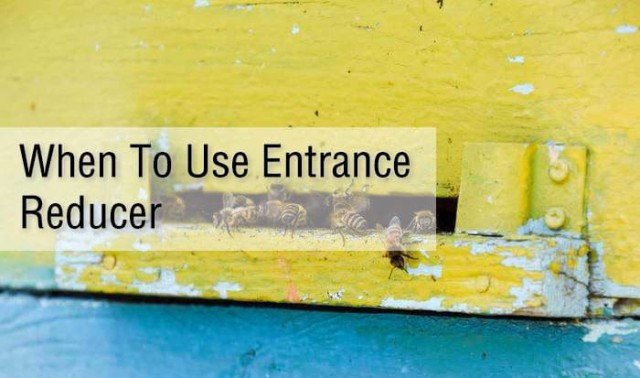The entrance reducer is a small piece of wood or metal that is placed over the entrance to the hive. This reduces the size of the entrance, which helps to keep the bees warm in the winter.
We use entrance reducers on our beehives to control the size of the opening that the bees use to come and go. By controlling the size of the opening, we can better control the temperature inside the hive, and the amount of ventilation. This is especially important in the winter, when we need to keep the hive warm, and in the summer, when we need to keep the hive cool.
One common type of beehive entrance reducer is the metal round reducer. These reducers are placed over the hole from which bees come and go, and they have a small hole in the center that can be opened or closed as needed. Beekeepers use these reducers to help them control the amount of traffic going in and out of the hive, and to keep bees from flying out when they aren't supposed to. There are also plastic round reducers, which work in a similar way.
Mice are a common problem for beekeepers because they can easily eat through the wax comb and steal the honey. An entrance reducer helps to keep them out by narrowing the opening to the hive. This can also be called a mouse guard because it is commonly used in the fall to keep mice from getting into the hive.
What Does An Entrance Reducer Do?
This can be very helpful in the winter when the bees are trying to conserve heat and heat their hive. By reducing the entrance, you are essentially helping the bees to heat their hive and survive the winter. An entrance reducer can have many benefits for the beekeeper and the bees. By reducing the entrance, you are essentially helping the bees to heat their hive and survive the winter. In the summer, an entrance reducer can help to keep out pests and predators. By reducing the size of the entrance, you are making it more difficult for pests and predators to get into the hive. This can help to keep your hive healthy and your bees safe.
Secondly, bees must be constantly groomed and fed by their hive mates, as they are unable to do it themselves. This takes a lot of time and effort, and it’s not uncommon for a bee to get lazy and not do its fair share. Lastly, bees are very sensitive to changes in their environment, and even the smallest disturbance can throw off the delicate balance of the hive.The population of a hive naturally ebbs and flows throughout the year, which creates an ever-changing workforce of bees responsible for guarding the hive. Secondly, bees must be constantly groomed and fed by their hive mates, as they are unable to do it themselves. This takes a lot of time and effort, and it’s not uncommon for a bee to get lazy and not do its fair share. Lastly, bees are very sensitive to changes in their environment, and even the smallest disturbance can throw off the delicate balance of the hive.
As winter looms, this population decreases, since the colony is weakened. The lack of food and the cold weather make it difficult for them to survive. In addition, many of them die because of diseases and parasites.
The decline begins in early July when the population starts to die off. This is due to a decrease in the number of eggs being laid and a shorter life span for the bees that are born during this time. The decline continues until the population reaches its lowest point in mid-winter.The population of a hive can best be divided into two periods. Those periods are six months of growth from December through June, followed by six months of decline. The decline begins in early July when the population starts to die off. This is due to a decrease in the number of eggs being laid and a shorter life span for the bees that are born during this time. The decline continues until the population reaches its lowest point in mid-winter.
A beehive entrance reducer is a tool that helps beekeepers manage the size of the entrance to the hive. By providing a consistent hole size, it makes it easier for the bees to defend the entrance against intruders. This is especially important when the population of the hive changes, as a smaller entrance is easier to defend.
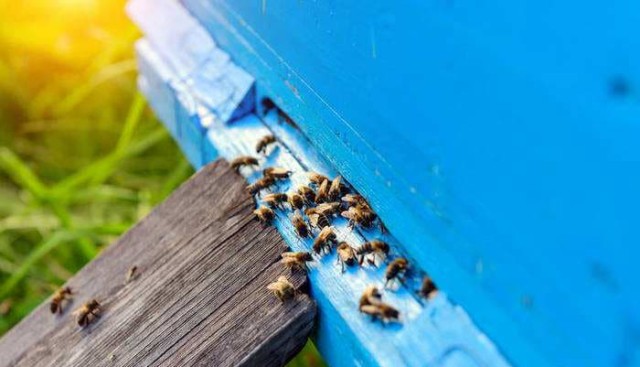
Bees are amazing creatures that are essential to our eco-system. Unfortunately, they are struggling right now. There are a few reasons for this. Firstly, their habitat is being destroyed. Secondly, entire colonies can become weak, and new colonies are being started yearly. This can happen after a hive swarms, is made weak by pests, or simply from something the beekeeper does. We need to do everything we can to help the bees. This means creating more bee-friendly environments and being more careful when we interact with them.
An entrance reducer is a small piece of wood or other material placed over the entrance to a beehive, reducing the size of the opening and making it more difficult for bees to enter and exit. Robber bees are bees that enter other hives and steal honey, often taking advantage of weaker hives. By placing an entrance reducer on a weaker hive, it makes it more difficult for robber bees to access the honey, and therefore helps to protect the hive.
When Should I Use An Entrance Reducer
An entrance reducer is a piece of equipment that is placed over the entrance of a beehive in order to control the size of the opening. This is important because it helps to regulate the temperature inside the hive and it can also protect the bees from predators.
We only remove entrance reducers during periods of high nectar flows concurrent with a large colony. And even then, sometimes we don't take it off. The main reason for this is because entrance reducers help to regulate the temperature inside the hive during hot summer days. By reducing the size of the entrance, less heat is able to enter the hive, which helps to keep the bees cooler and prevents them from over-heating.
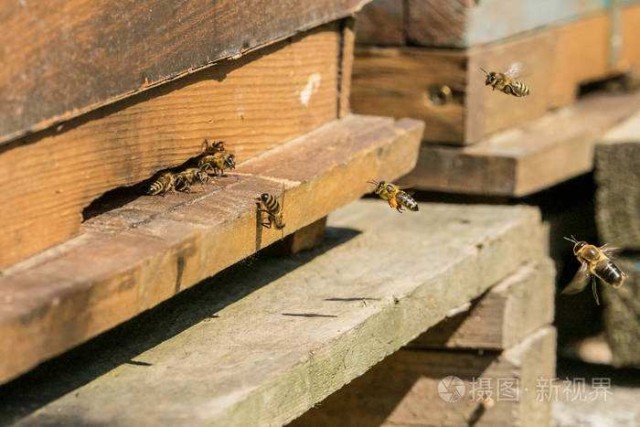
We aren’t concerned about lots of bee traffic because we like to leave our entrance reducer on in both warm and cold weather.
Bees are naturally attracted to areas where there is a lot of activity, and their entrance reducer helps to control the traffic coming in and out of the hive. When we see bees struggling to find a way inside the entrance because too many bees are coming and going, it is a sign that the hive is healthy and productive. Even then, it isn’t essential to remove the entrance reducer.
When you use the very small, 1-inch gap on the wooden entrance reducers you typically see, the exception would be when the hive is too small for a healthy one. These entrances are usually used for smaller, weaker hives that need to be protected from outside predators and weather.
An entrance reducer is a small device that helps to regulate the flow of air into a building. By reducing the size of the opening, it allows for less air to enter the building, which can help to reduce heating and cooling costs. Additionally, it can help to reduce drafts, noise, and pollutants from entering the building.
If you have multiple hives, you may want to consider using entrance reducers. These can help to control the flow of traffic in and out of the hive, and can also help to keep pests and predators out. If you try them on one colony and like them, you can put them on all of your hives.
Location Of Bee Hive Entrances Reducers
The reducer is placed over the hive opening to help control the size of the opening, and therefore the amount of traffic in and out of the hive. The reducer can be opened or closed as needed, depending on the time of year and the needs of the colony. The beehive entrance reducer is a simple but effective tool for regulating the amount of traffic in and out of the hive. By controlling the size of the opening, the beekeeper can help the colony to keep its population under control and to prevent too much traffic from coming in and out of the hive. The reducer can be placed in several different positions on the hive, depending on the beekeeper's preference, and can be opened or closed as needed to meet the needs of the colony.
You also risk damage to the combs as you move them around. With a bottom entrance, you can keep the bees in the lower part of the hive while you work in the top. A bottom entrance on a modern Langstroth hive is much easier to manage during hive inspections. When the entrance is at the top of the hive, you get many confused bees in the air when you start taking the hive apart. This can make inspections more difficult and time-consuming. With a bottom entrance, you can keep the bees in the lower part of the hive while you work in the top, which makes the process much simpler and less disruptive.
Also, you can have an opening on the side or the top. However, the Top Bar Hive is more labor-intensive because you have to make all the frames yourself. The Langstroth hive is the most popular type of hive, followed by the horizontal Langstroth hive and the Top Bar hive. All three types can be handmade, so you can customize the entrance size and location (side or top). The Top Bar hive is more labor-intensive because you have to make all the frames yourself.
A smaller entrance size on a beehive means that fewer bees dedicate their days to guarding the entrance. This is because there are fewer bees needed to protect the hive from predators and other dangers. This leaves more bees free to forage for food and pollen, which benefits the hive as a whole.
A bee that is not a dedicated guard bee means one more bee that can be foraging or responding to other needs the colony may have. This is beneficial to the colony as a whole as it allows them to be more efficient and better able to meet the needs of the group.
An oversized entrance to a bee hive can be a problem because it requires the bees to spend more time and resources than they could be spending on another activity. This can lead to a decrease in the overall productivity of the hive.
Even with a small entrance, bees usually perform all their daily jobs in the brood nest. This includes the need to clean out the hive by taking dead bees out of the hive. When a bee stings something, it leaves its stinger in the wound. Once the stinger is detached from the bee, it continues to pump venom into the wound for a short time.
If you have a small beehive, you might find that the entrance becomes clogged with debris like dead bees. But if you have a large enough entrance reducer, this shouldn't be an issue.
Types Of Entrance Reducers On A Bee Hive
You actually don’t need the entrance reducer that came with your beekeeping kit. Any kind of reducer will do the trick. Just make sure that it’s the right size for your hive.
If you remember, the entrance reducer just makes the entrance smaller. We have been out working bees and needed to reduce the entrance so we just ended up shoving sticks into the entrance. This works for a little while, but eventually the bees will just push the sticks out and the entrance will be back to its original size.
The Beetle Blaster is a device used for keeping small hive beetles out of the hive. This device also doubles as an entrance reducer. The Beetle Blaster is made of two concentric circles of hard plastic with small holes drilled through them. The outside circle has 36 holes and the inside circle has 24 holes. The Beetle Blaster fits over the hive entrance and the bees can enter and exit through the holes in the device.
We are very happy with the metal entrance reducer we built that fits both 8 and 10 frame hives. We designed it to work well and make good sense for the bees and the beekeeper. We spent a lot of time making sure it would be easy to use and would help the bees thrive.
The large notch is for the entrance of the hive, while the smaller notch is for bees to enter and exit the hive. The reducer is placed on the entrance of the hive so that the bees can enter and exit easily, but it also prevents pests and other animals from getting into the hive. Wooden entrance reducers are a common type of reducer found on beehives. They have two notches - one small and one large. The large notch is for the entrance of the hive, while the small notch is for bees to enter and exit. The reducer helps keep pests and other animals out of the hive while also allowing bees to move in and out easily.
Most beehives have a small entrance that is typically too small for most colonies. The wooden reducers that we have built out of cypress wood are a good size for both small and large colonies. The notches on the reducers are a good size for the bees to be able to come and go as they please.
Entrace Reducer Metal
The disc entrance reducer is a great way to reduce the size of your entrance. The disc rotates around so you can use the entrance you prefer. The disc is round and has a variety of holes that you can use.
There are many different types of beehives, but the most common type is the Langstroth hive. Langstroth hives have removable frames that make it easy to inspect the hive and harvest the honey. The most common options for the entrance to a Langstroth hive are a fully open entrance, an entrance that keeps the queen from going in and out, closed but ventilated, and an entrance only large enough for one or two bees.
Bees have a few tricks up their sleeve to control heat, and they use these during the hot summer and winter months. Through this natural behavior, the bees can achieve proper air circulation, and it can be done with a small or large entrance size. By fanning their wings near the entrance, they are able to generate a draft that pulls the cool air from outside the hive into the interior.
A fully open entrance provides the best ventilation but it also allows too much ventilation. One could argue that a partially open entrance would provide better ventilation while still allowing some airflow.
Bees are amazing creatures that have a natural ability to build and maintain their hives. They are able to keep the inside of their colony clean and managed without the help of humans. We can trust them to handle it and know that they will do a good job.
The recommendation is a 3/8 diameter hole for every hundred bees in a colony. If a colony has 20,000 bees, they will need a hole at least 75 long to come and go without restraint.Bees are vital to our ecosystem and play a significant role in pollination. To ensure a healthy bee population, it is important to provide them with proper ventilation. Research has shown that bees prefer a 3/8 diameter entrance hole for every hundred bees in a colony. If a colony has 20,000 bees, they will need a hole at least 75 long to come and go without restraint. By providing bees with the proper ventilation, we can help them thrive and continue to pollinate our crops and plants.
There is a lot of good research on wild honey bees and what they prefer. This research can be used to adapt managed hives to better suit the needs of bees. By providing a more natural environment for bees, we can help them to thrive and produce more honey.
Entrance Reducer For Robbing
This happens when a bee is attracted to a particular fragrance, and then they land on the source of that smell. Once they've found it, they start to rob the pollen or nectar from that source. Bees are attracted to certain fragrances, and when they land on the source of that smell, they start to rob the pollen or nectar from that source. This is called robbing, and it's a behavior that bees do in order to get what they want. While it may not be the most polite thing to do, it's certainly an effective way for bees to get the resources they need.
Bees are typically gentle creatures that work hard to gather nectar and pollen to bring back to their hive. However, there is a dark side to bee society – the practice of robbing. Robbing is a free for all for bees where instead of foraging for nectar, a colony forager bees will steal the resources from another colony that can’t protect itself. This often happens when a hive is weak or dying, and the robbers see an opportunity to get an easy meal. While robbing can provide a boost to the robbing hive, it can also be disastrous for the victim hive, leading to its eventual demise.
If you're looking to stop robber bees from raiding your hive, an entrance reducer won't be very effective. There are other tools designed specifically for this purpose that will do a much better job.
Robbing screens are entrances that are designed to help with robbing. They use a little deception to make it harder for robbers. They are typically made of metal or mesh and have a small opening that the bees can enter, but the robbers cannot. The screens can be placed on the hive entrance or on the top of the frames.
Keeping Mice Out Of Your Beehive
There are a few reasons for this. For one, the entrance to the hive is usually too small for a mouse to fit through. Even if a mouse could fit through the entrance, the inside of the hive is full of bees that would quickly sting the mouse. Finally, the honey inside the hive is not really appealing to a mouse, so they are not likely to try to get into the hive for a snack.
In the past ten years, we have only noticed mice in one hive after the winter passed, and the mice had been living in the equipment all winter long. The mice had chewed through the hive foundation and had been living in the insulation. We did not find any evidence of them in the hive during the winter months, so we can only assume they were living in the hive equipment.
The mice colony in your home died out months ago and they have since just turned their boxes into their home. So, don't expect mice to be a problem you have to think about every fall.
An entrance reducer is a vital part of keeping mice and other rodents out of the hive. By narrowing the entrance, it makes it more difficult for them to gain access and quickly become a nuisance. Many other pests can also be deterred with an entrance reducer in place, making it an important part of hive maintenance.
The smaller entrance also keeps out weather elements like rain and snow.
If a wasp does manage to get into the beehive it can cause a lot of trouble. They will often chase the bees and try to steal their honey. The wasps can also be a general nuisance and make it difficult for the bees to do their job.
The Size Of Entrance Beehive
Neither of these is big enough to satisfy the needs of a large colony of beesWild honey bees have a preference for an entrance size of between 10 and 15 square centimeters, or 1.5 ~ 2.5 square inches. A wide open entrance on a 10-frame hive is 10.5 square inches and the entrance of an 8-frame hive wide open is 9 square inches, but neither of these is big enough to satisfy the needs of a large colony of bees.
If you want to turn your Langstroth entrance into a more natural entrance size the bees prefer, block the entire entrance except 2-3 inches. This remaining entrance will be between 1.5 ~ 2.5 square inches. Doing this will help to keep out robbers and other pests while still allowing the bees to come and go as they please.
Metal Beehive Entrance Disc Wholesale
Wide variety of applications in one piece of beehive entrance disc! Simply mount with a screw (not included).
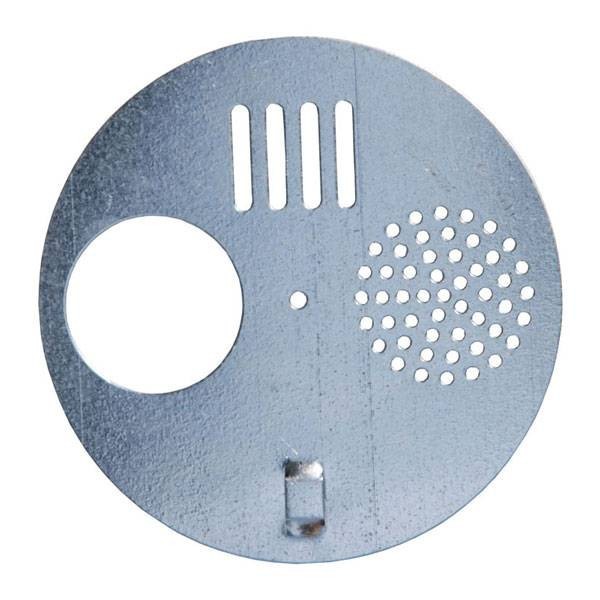
Plastic Beehive Entrance Disc Wholesale
These discs fit snugly over the entrance to your hive, keeping out debris and pests. They also help to regulate the temperature inside the hive, which is critical for the bees’ health.
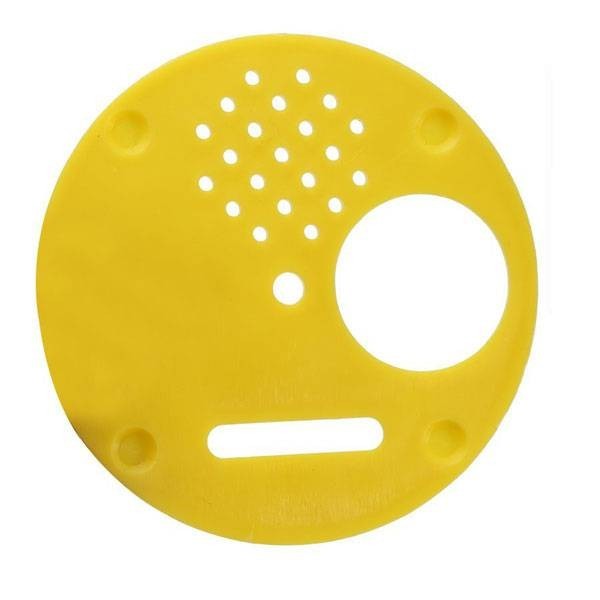
Beehive Entrance Reducer Wholesale
Beehive entrance reducer is a very effective tool in helping the bees stay warm over the deepest winter months.

